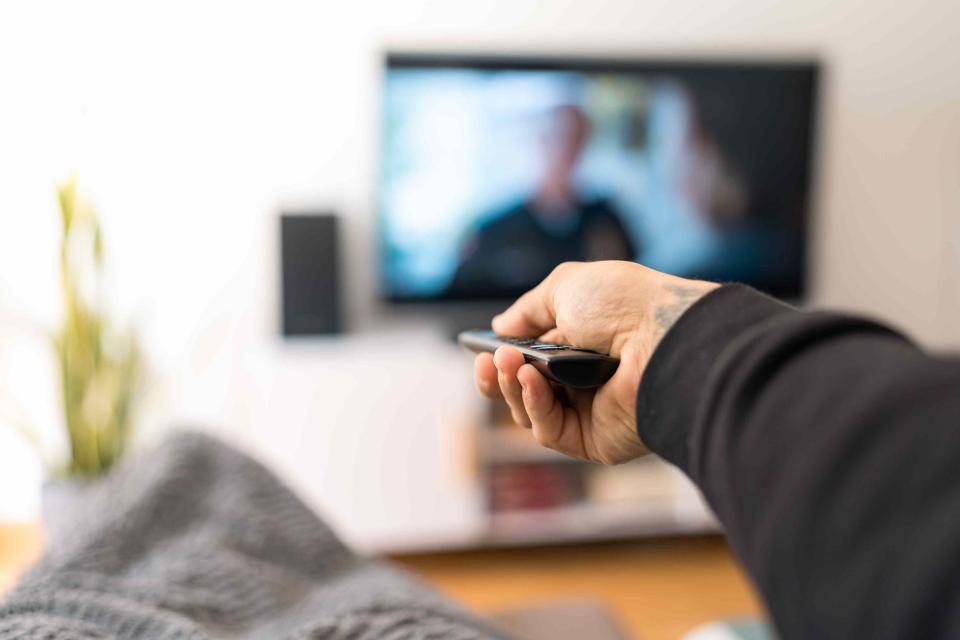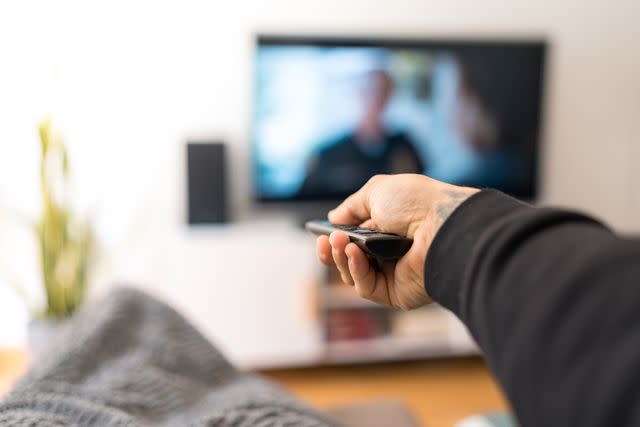Treatment for Bulging Disc Pain
Rest and over-the-counter pain medications can help with bulging disc pain.

Alvaro Lavin / Getty Images
Medically reviewed by David Kesselman, DC
Almost everyone experiences back pain at one point or another, which can be debilitating. A bulging disc is a common cause of low-back or neck pain. It happens when one of your intervertebral discs (the fluid-filled cushions that are between bones in the spine, called vertebrae) moves out of place. Rather than being aligned with the edges of the vertebrae, the disc bulges over. This can put pressure on your nerves, causing pain and inflammation.
Continue reading to learn more about bulging discs, including how they compare to slipped discs or herniated discs, symptoms of a slipped disc in the lower back, treatments, and how to find relief.
Bulging Disc vs. Herniated Disc
Bulging discs and herniated discs can both cause low-back pain. They are both linked to degenerative disc disease, but they’re not the same thing. Still, sometimes the terms “bulging disc” and “herniated disc” are used interchangeably, which can be confusing.
With a bulging disc, the intervertebral disc moves out of place but remains intact. With a herniated disc, the thick outer layer of the disc ruptures, allowing the jellylike material inside the disc to leak into the spinal nerves. (Learn more about the difference between bulging discs and herniated discs here.)

Alvaro Lavin / Getty Images
Location of Bulging Disc Pain
A bulging disc can happen anywhere along your spine. However, they’re most likely between the last five vertebrae in your lower back. This is an area known as the lumbar spine. Because the lower back is subject to a lot of pressure and movement with daily activities, it is prone to pain and injury, including bulging discs.
The next most common place for a bulging disc is in the neck. This area is known as the cervical spine. Like the lumbar spine, the cervical spine is essential to daily movements and, therefore, prone to injury.
Causes: Why Do I Have Bulging Disc Pain?
Bulging discs are most often related to age. Over time, the intervertebral discs naturally degenerate. This is known as degenerative disc disease. It can cause the discs to pull downward, bulging from their usual placement between the spine's bones.
In addition to aging, these factors can cause or worsen a bulging disc:
Poor posture
Lifting heavy objects or making repetitive motions
Having spinal injuries
A family history of spinal or disc disease
How Do You Know If Pain Is From a Bulging Disc?
If you have lower-back pain, you usually don’t need to see a healthcare provider for a diagnosis. The recommendation for this type of pain is to rest unless you have it for six weeks or more.
However, if your pain interferes with your daily function or has lasted longer than six weeks, you should see a healthcare provider to diagnose a bulging disc. They’ll likely order a magnetic resonance imaging scan (MRI), which can show where a disc is protruding from the vertebrae.
Worsening Bulging Disc Symptoms
For about 90% of people with a bulging disc, the pain gets better with time, rest, and over-the-counter (OTC) pain relievers like nonsteroidal anti-inflammatory pain medications (NSAIDs). Some people have bulging discs but never experience symptoms—if your disc isn’t pressing on any nerves, it likely won’t cause pain.
Unfortunately, bulging disc pain can worsen over time. If your pain persists even after you rest, contact your healthcare provider.
Treatment to Address Bulging Disc Pain
Treating a bulging disc takes time and patience. Here’s how to start.
Take It Easy
If you have bulging disc pain, the most important thing to do is rest your back as much as possible. Many patients benefit from a day or two of bed rest. After that, start light activity like walking. Avoid any movements that make your pain worse.
NSAIDs
NSAID pain medications like Advil and Motrin (ibuprofen) or Aleve (naproxen) can keep you comfortable and reduce inflammation contributing to pain. Talk to your healthcare provider about what NSAID dose is safe for you and how long you can take these medications.
Physical Therapy
If rest and OTC medications don’t help, ask your healthcare provider for a referral to physical therapy for low-back pain. The physical therapist can help address your current injury and introduce exercises to help prevent another bulging disc in the future.
Steroid Injection
Getting an epidural steroid injection can provide pain relief if you’re still uncomfortable after six weeks. A healthcare provider will inject the steroid cortisone into your spine to reduce inflammation and pain.
Surgery
When other treatments don't work, your healthcare provider may recommend surgery for a bulging disc, such as a microdiscectomy. In this procedure, a surgeon will use small incisions to remove all or part of a bulging disc in the lower spine. Most people with a bulging disc will not need surgery.
Healing Temporary Bulging Disc Pain
If you’re experiencing bulging disc pain for the first time, a few days of rest will likely resolve the issue. Take time off from your exercise routine or repetitive movements at work. Instead, incorporate light movements that don’t cause you pain, like walking.
Once you’ve healed, strengthen your core and lower back to prevent future injuries. In the meantime, use OTC NSAIDs to control your pain and inflammation.
Healing and Managing Chronic Bulging Disc Pain
Living with chronic back pain can be difficult. If you have recurrent bulging disc pain, work with a healthcare provider or physical therapist to create a treatment plan. Staying active can combat disc disease. Your physical therapist can recommend exercises that will help keep your back healthy and strong.
Steroid injections can also help. Some patients need periodic steroid injections every few months to reduce pain and inflammation.
Summary
A bulging disc happens when the soft cushioning that usually sits between your vertebrae spills over. When this puts pressure on the surrounding nerves, it causes pain. Bulging discs are often caused by age, but repetitive movements or lifting heavy objects can contribute to them too. Symptoms usually resolve on their own, but some patients may need physical therapy, steroid injections, or surgery.

